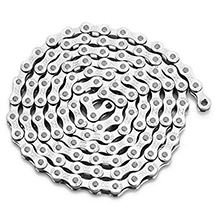Bike saddle purchasing advice: how to choose the right product
- What You Need to Know
- When cycling, the saddle makes a considerable contribution to riding comfort.
- Which saddle is the right one depends on how you ride and your riding position.
- Saddles are designed for specific activities, such as leisurely riding or sport.
- An important point of reference is the distance between the sit bones.
- A suitable saddle is only comfortable if the correct saddle height is chosen.
Cycling comfortably with the right bicycle saddle
The bicycle is a popular means of transport because it combines mobility with physical activity. The daily commute to work becomes an exercise session. A sunny weekend is an invitation to go for a bike ride. But when our backs and bottoms hurt while cycling, we want to get off again. The reason for the discomfort is often an unsuitable bicycle saddle. With the right design, the pleasure of cycling returns.
Along with the pedals and handlebars, the saddle is one of three contact points between the rider and the bike. The buttocks are one of the areas of the body that are subjected to the most stress when cycling. In certain riding styles, almost the entire body weight rests on this area. Choosing the right saddle is therefore crucial for comfortable, healthy and enduring riding.
Different saddles for everyday use and sport
Most people use a bicycle primarily in everyday life, for example to go to work, to do errands or to visit friends. Especially in big cities, it is often easier to get around by bike than by car. You don’t need a particularly sporty bike for this. Such a bike is less suitable for everyday use than a city bike or Dutch bike, which are ideal for everyday use. Many cyclists therefore look for a saddle that is above all comfortable and supports quiet riding in an upright position. Especially if the bike is used daily, a high-quality saddle that fits one’s anatomy is important.
If, on the other hand, you cycle for sport, you need a different saddle. Due to the forward leaning seating position, for example when riding a road bike, padding does not play a role because more weight is on the handlebars. Padding only means additional weight. For sporty bikes, whether road or mountain, a saddle shape that is easy on the pubic bone is important. As road cycling and time trials require a less upright sitting posture, this is particularly stressed.
Signs that your saddle is not right for you
You can tell that a saddle is not right for your backside by numbness, discomfort in the tailbone and pressure points in the buttocks. Bicycle saddles that are too wide cause friction on sensitive parts of the body. With the right saddle on your bike, you can avoid all this.
How is a saddle constructed?
A modern saddle consists of four parts: the frame, the base, the padding and the saddle cover. The rear, wide part is the seat, the front, long part is the saddle nose.
The saddle frame is made of very sturdy steel or titanium tubes that are shaped approximately like the letter “V”. It is the basic frame of the saddle. The frame is fixed to the seat post with a bolt. This post is a tube that connects the saddle to the bicycle frame. When the saddle clamp at the lower end of the tube is loosened, it can be moved. This allows the seat height to be changed.
The base gives the saddle its shape. It is connected to the metal frame at three points and is usually made of plastic. In addition to models made of hard plastic, there are also softer versions. High-quality saddle bases adapt flexibly to the rider’s weight. The shape of the base is crucial for riding comfort.
Nowadays, the padding is made of cellular foam. A special variant is gel padding. The soft inserts compensate for shocks on uneven ground. Suspension under the saddle is only found on classic models made of leather, which do not have a foam interior.
The saddle cloth is pulled over the padding. A good saddle cloth is smooth without being slippery. It is pliable but not brittle and breathable. Three materials are common: leather is quite expensive but very breathable. The key advantage of leather is that it sinks in over time, so the saddle adapts to the rider’s rear end. Lycra is smooth and breathable, but prone to breakage. Vinyl resembles leather in surface texture but is less breathable.
How does cycling stress the body?
Cycling puts particular strain on the buttocks, i.e. the sit bone and the pubic bone. Depending on the posture and riding style, these bones are stressed to different degrees. When sitting upright, the ischium is stressed, whereas the pubis is relieved. With an upright riding posture, the dead weight is better distributed on a large seat surface. Anyone who works a lot while sitting knows another problem: after sitting for a long time, pain occurs in the large gluteus maximus muscle. The only thing that helps here is regular training and stretching.
When the cyclist tilts the upper body forward during sporty riding, the pelvis also tilts forward, which puts strain on the pubic bone. In the perineal area between the legs are nerve tracts and blood vessels that are squeezed. A suitable saddle is therefore particularly important for all those who practise cycling as a sport.
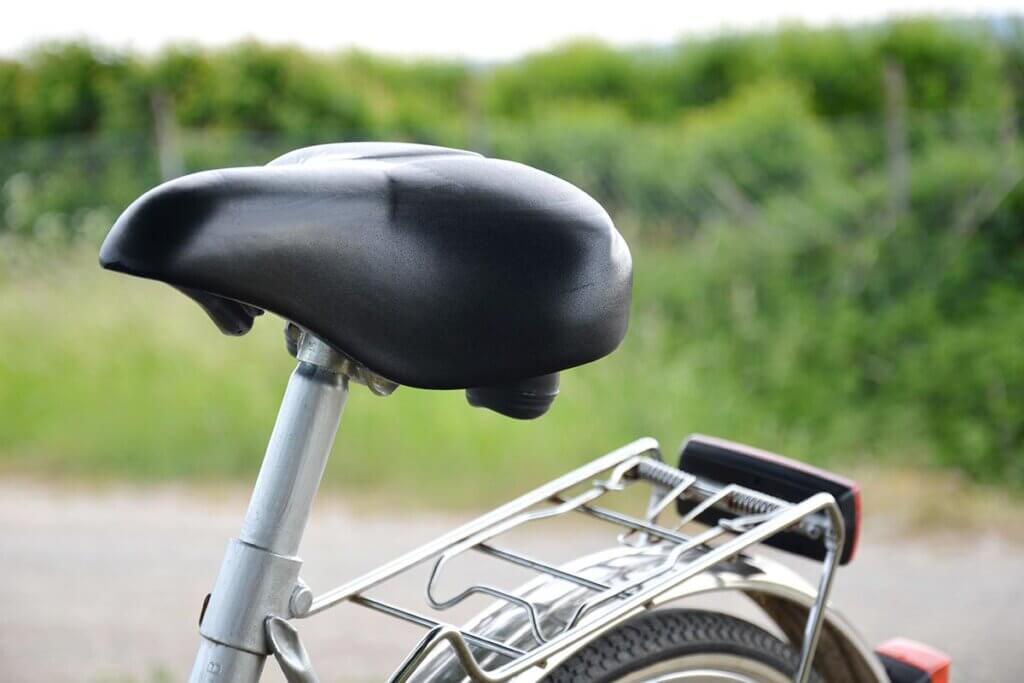
Every bike needs its saddle
When you look at the saddle of a road bike, you immediately notice that it is very different from the saddle of a Dutch or trekking bike. The different designs of bicycles require a different construction of the saddle, depending on the sitting position. A wide saddle is best suited for sitting almost upright on a Dutch bike or a city bike. The more the upper body is bent forward when riding, the narrower the saddle needs to be. This can be clearly seen in the long and narrow saddles of racing bikes.
City bike – The comfortable saddle
On city bikes and Dutch bikes you sit almost upright. This is why the saddles used here are the widest. City and comfort saddles guarantee discomfort-free cycling. The gel or foam inserts not only reduce shocks but also the pressure on the sit bones.
Pro points
- Versatile use
- Available in many designs
Drawbacks
- Unsuitable for sporty cycling
Trekking bike – The saddle for long trips
A trekking or touring bike requires a slightly narrower saddle than a city bike. This is because a sporty, less upright sitting posture is advantageous on a bike tour. When riding for a long time, a lot of weight rests on the buttocks, which is why these saddles are well padded and ergonomically shaped. Many sporty saddles have recesses in the centre of the saddle that relieve pressure on sensitive regions such as the pubic bone and ensure unhindered blood flow to the perineal area. These recesses are called relief channels. Look for such a channel when buying a saddle.
Pro points
- Comfort even on long tours
- Also suitable for mountain bikes
Drawbacks
- Not suitable for racing
Mountain bike – The robust saddle
When mountain biking, cyclists do not sit so much as stand on the pedals. Therefore, seat comfort does not play a major role. Nevertheless, the saddle is enormously important for quickly shifting the body’s centre of gravity and thus maintaining balance. With the right saddle, the rider is in control of the bike at all times. Mountain bike saddles are narrow, light and sporty. Because of the way they are ridden, they are made of heavy-duty materials, as they have to withstand a lot of vibrations.
Pro points
- Good grip on rough terrain
- Also suitable for longer tours
Drawbacks
- Hard surface
Road bike – The sporty saddle
When riding a road bike, cyclists adopt a flat riding position. The more they tilt their upper body, the narrower the saddle must be. For this reason, racing and triathlon bikes are fitted with very slim saddle models by the manufacturer. For athletes who tend to sit upright on a road bike, there are wider road bike saddles. If you want to reduce pressure in the perineal area, you need a saddle with a relief channel in the middle. Since the saddles should be as light as possible for sporting reasons, padding is largely dispensed with.
Pro points
- Low weight
- High freedom of movement in a bent position
Drawbacks
- Not very suitable for everyday use
- Hardly padded
Leather saddle – beautiful and practical
Leather saddles are available in various forms. They are especially common on older bikes or retro models. Once broken in, leather saddles adapt perfectly to the rider’s anatomy. They are also considered to be extremely breathable. The high quality of materials and workmanship guarantees comfortable cycling. Since leather is a natural product, regular care is essential. They should also be protected from moisture, which is why it is always necessary to find a covered parking space or to cover the saddle.
Pro points
- Robust and durable
- Adapts to the shape of the body
Drawbacks
- Relatively expensive
- Longer running-in period
- Complex maintenance
- Sensitive to wetness
Saddles for children
Saddles for children and young people need to fit securely. The shape and width of the saddle should always be adapted to the child’s body weight and size: The bigger the child, the wider the saddle. This way the child sits safely and comfortably on the bike. Recesses and padding on these saddles also reduce pressure points and discomfort.
Pro points
- Better fit for growing children
- Much freedom of movement
Drawbacks
- Growing out quickly
How to find the right saddle
The choice of a saddle depends on the type of cycling you do and your physical characteristics. Only the right bicycle saddle will allow you to ride comfortably in the long run. Find out about the shape, width and weight of the saddle. There is no such thing as a saddle that is suitable for everyone, because everyone’s buttocks are different. What is comfortable for one person may cause discomfort for another. Decisive for the purchase are the padding, the weight, the length and width. It also depends on which sitting posture the saddle shape allows.
The saddle shape
The riding posture determines the shape of the saddle. This means that a different saddle is required depending on the riding style. If you ride in a sporty manner, you will adopt a flat riding position. In this position the pelvis tilts forward. For this reason, sports saddles are narrow and long. Very sporty models are barely two centimetres wide at the top and have a length of almost 30 centimetres.
For an upright riding posture, for example on a city bike, a wide and short saddle is well suited. A saddle that is ideal for a very upright position of the rider can have a width of 20 centimetres and a length of 27 centimetres.
The dimensions of a good trekking saddle lie between a sports saddle and an upright saddle. Such a saddle is well suited for long bike rides at a leisurely pace.
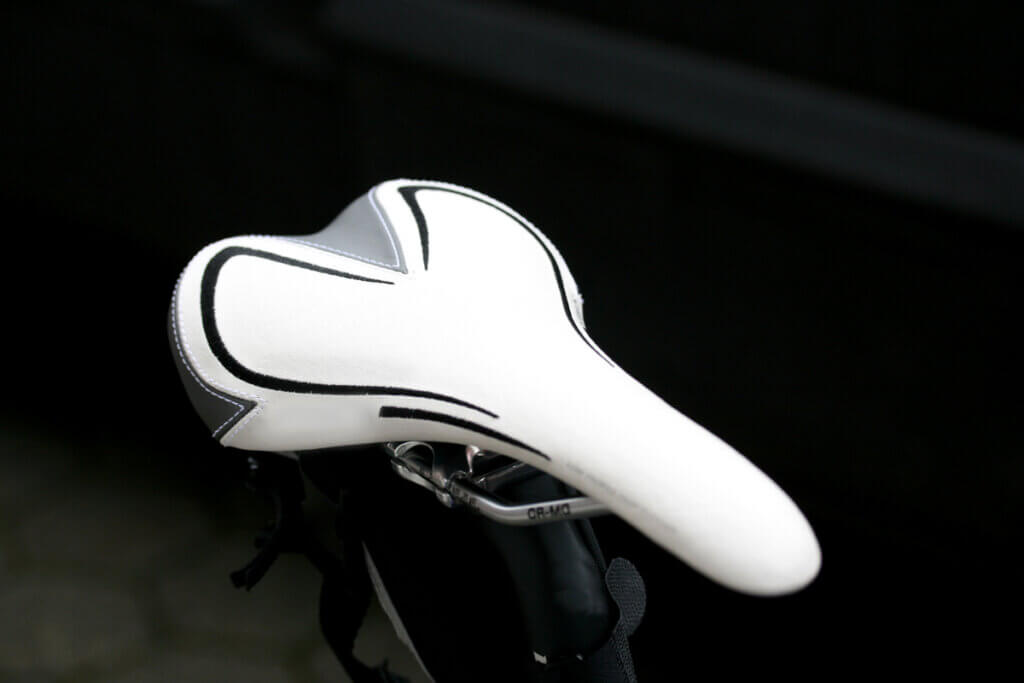
In addition to the length and width, the shape of the saddle cover also plays a role. Saddles with a straight surface give little support to the sit bones. The pressure here occurs selectively, which often leads to sitting discomfort. A slightly raised saddle surface with sloping edges can significantly increase sitting comfort. This shape offers a larger contact surface for the sit bones. On the other hand, there should not be a strong bulge on the saddle nose so as not to strain the perineal area.
A hole in the saddle
Some saddles have conspicuous holes in the middle. These holes take pressure off the rider’s perineal area and improve blood circulation. They are especially common in sports saddles and are also called hole saddles. The edge area of these holes can be problematic, as new pressure points or friction can sometimes occur there. A channel-shaped, narrow recess is the better solution.
Seat bone measurement
For optimal riding comfort, the saddle must fit the cyclist’s sitting bones. The ideal width of the saddle is based on the distance between the sit bones, which is about 11.5 centimetres on average. You should determine your own seat bone distance before buying. All you need is a piece of corrugated cardboard, a pencil and a ruler. To take a seat-bone measurement, proceed as follows:
- Place the cardboard on a flat, hard seat surface.
- Sit carefully on the cardboard.
- Apply pressure so that the sit bones come out better.
- You will find two imprints on the cardboard and mark their centres.
- The distance between these two points is your sit bone width.
Now that you have determined the value, add a certain value depending on how you ride to get the saddle width that suits you. The decisive criterion here is your sitting posture on the bike:
In an almost horizontal, very low position, the seat bone distance is adopted without addition. These narrow saddles are intended for triathlon and time trial riders.
On the road bike or mountain bike, riders adopt a low, sporty posture. One centimetre is added to the distance.
For the slightly bent position on a bike tour, an addition of two centimetres is suitable.
For an almost upright posture, three centimetres are added to the seat-bone distance.
The upright riding position, for example on a Dutch bicycle, requires an addition of four centimetres.
Padding: Soft or hard saddle?
Here, too, the riding posture is decisive. For someone who rides short distances in city traffic and tends to sit upright on the bike, a well-padded, soft saddle is most comfortable. On a leisurely bike ride at the weekend, you are also well on your way with it.
On the other hand, if you use your bike for sport, you should not choose a soft and supposedly more comfortable saddle. Road bikes have hard saddles for a good reason. When you sit bent forward on the bike, the weight is distributed over your buttocks and hands. This puts a lot of strain on the buttocks. In a soft saddle, however, the buttocks sink in, so places that are heavily loaded are no longer properly supported. Padding would also put pressure on the perineal area, where important nerves and blood vessels run. Finally, there is little room for padding between the legs moving up and down and the pelvis tilted forward. Cyclists would rub their thighs against it. Many wear padded trousers instead.
Hands off saddles that are too soft
We usually associate soft and padded seats with comfort. However, particularly soft bicycle saddles do not automatically offer more comfort. A soft saddle in which the buttocks sink is unsuitable for long periods of sitting and sporting activity. In order for the pressure to be distributed evenly over the rear end, it needs a hard and stable seat surface that does not give way.
The suspension
Recreational riders who prefer an upright riding position should make sure that the saddle has suspension, because more weight rests on the saddle when riding upright. A suspension saddle is particularly useful if the bicycle has no built-in suspension, for example in the fork or seat post. Most modern bikes at least have a suspension fork. Especially vintage leather saddles without a foam interior still have a clearly visible suspension.
Racing bikes are not designed for comfort, but for speed. That is why most racing saddles have no suspension. Mountain bike saddles are also narrow and sporty. The suspension that is absolutely necessary when using a bike for sport comes from other places. Suspension forks and large, compliant tyres absorb the shocks of the ground.
The weight
The weight of the saddle plays a role especially for those who want to go fast. For time trials on a road bike, every gram less matters. Very light racing saddles sometimes weigh only 250 grams. So if you want to be sporty, don’t buy a heavy leather saddle with suspension that weighs almost a kilogram. Everyday riders can also benefit from a lower weight, as it consequently means less effort when riding. However, this aspect is not decisive in the purchase decision.
How to adjust the saddle correctly
The right saddle is only half the battle. For the greatest riding comfort and the best sporting performance, the saddle must be correctly fitted to the bicycle. If everything is right, you will experience a whole new riding experience.
How high should the saddle sit?
If you have bought a new saddle, you need to determine the correct seat height. If the saddle is set too low, there is not enough body weight resting in your legs. Instead, you sit on the saddle and put too much weight on it. If the saddle is too high, you have to move your hips more and stretch your legs excessively to reach the pedals. However, the human leg is strongest when it can be fully extended. The saddle height should be adjusted to this. The increased effort required with an incorrectly adjusted saddle can also put strain on the knees.
When adjusting the correct height, proceed step by step. Estimate the rough seat height and ride a few laps on the bike. Then adjust the saddle about one centimetre higher. If this does not feel bad, start riding again. If the saddle was too low before, cycling will now feel easier and faster. If there is an improvement, increase the seat height again for the next ride. Repeat this until the seat is really set too high, then move it back a little.
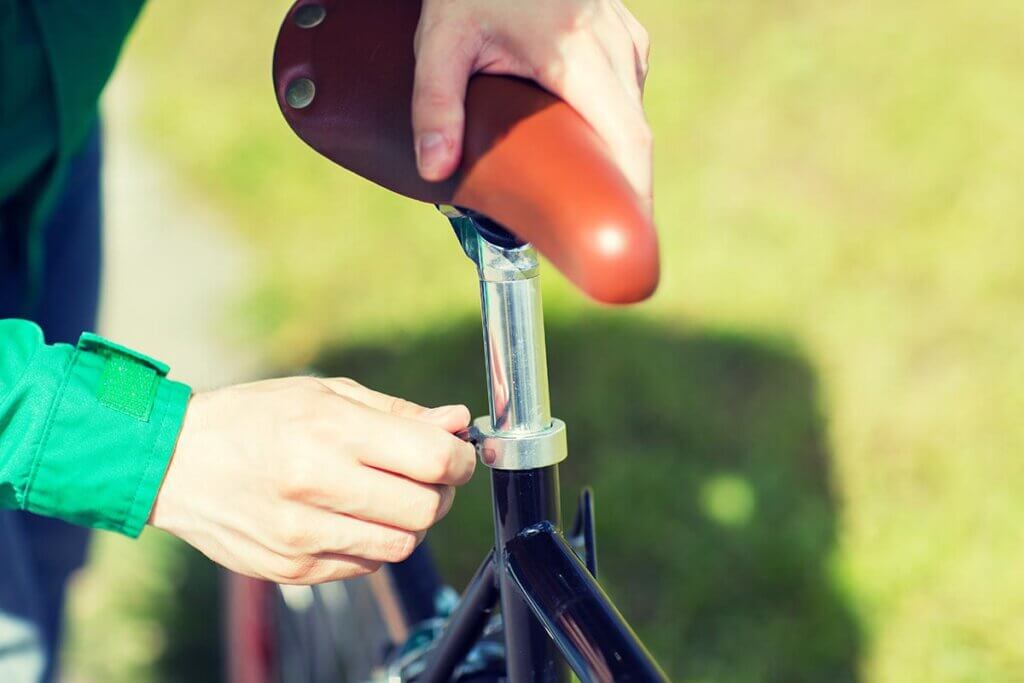
The saddle is mounted on a seat post that you slide into the seat tube of the bicycle frame. A seat clamp holds the seat post firmly in the seat tube. The clamp is tightened or loosened using tools or a quick-release mechanism. To adjust the saddle height, you have to loosen the saddle clamp. Then you can move the saddle together with the post up or down. You may have to turn the saddle a little before it can be pulled out.
Adjusting the angle
For a comfortable riding experience, not only the height but also the angle of the saddle is crucial. Put the saddle in a horizontal position. If the saddle is tilted down too much, the cyclist will constantly slide forward while riding. The saddle does not support his weight properly, which is why there is more pressure on the arms. If the saddle points upwards too much, this restricts the rider’s pedalling movement. A spirit level can help to adjust the angle correctly. There is a screw between the saddle frame and the seat post that can be used to change the angle of the saddle.
Finding the right saddle offset
In addition to height and angle, the so-called offset can also be adjusted. The saddle offset indicates how far forward or back the saddle is in relation to the seatpost. Accordingly, the distance to the handlebars and the position of the cyclist in relation to the pedals can be changed. A basic rule is that tall cyclists are best to push the saddle slightly backwards, while short cyclists push it forwards. Put the pedals in a horizontal position to the ground. The kneecap of the leg resting on the front pedal should be exactly vertical above the pedal axle. The aim is to push the saddle to the correct position behind the bottom bracket so that the pedalling angle is as efficient as possible. The saddle frame lies in two rails that allow it to be pushed forwards or backwards. To do this, you need to slightly loosen the saddle clamp bolts.
Fig. 1: © pia-pictures / stock.adobe.com | Fig. 2: © manu / stock.adobe.com | Fig. 3: © Syda Productions / stock.adobe.com

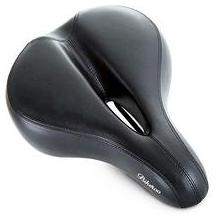
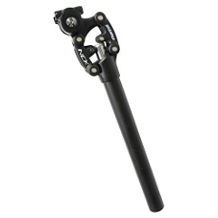

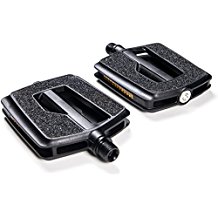
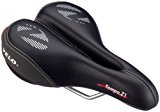
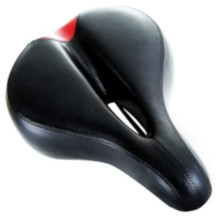
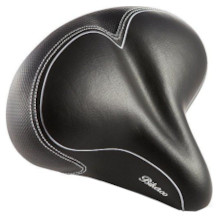
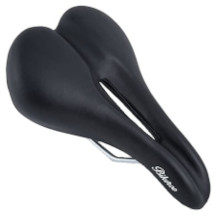
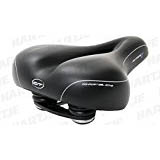
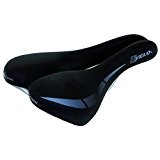
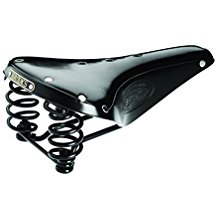

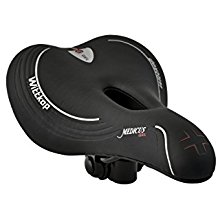
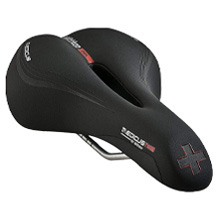
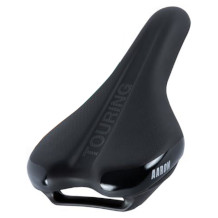
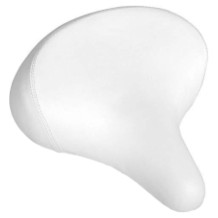
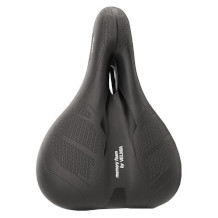
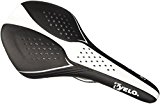
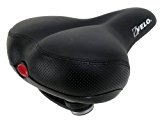

 921 reviews
921 reviews

